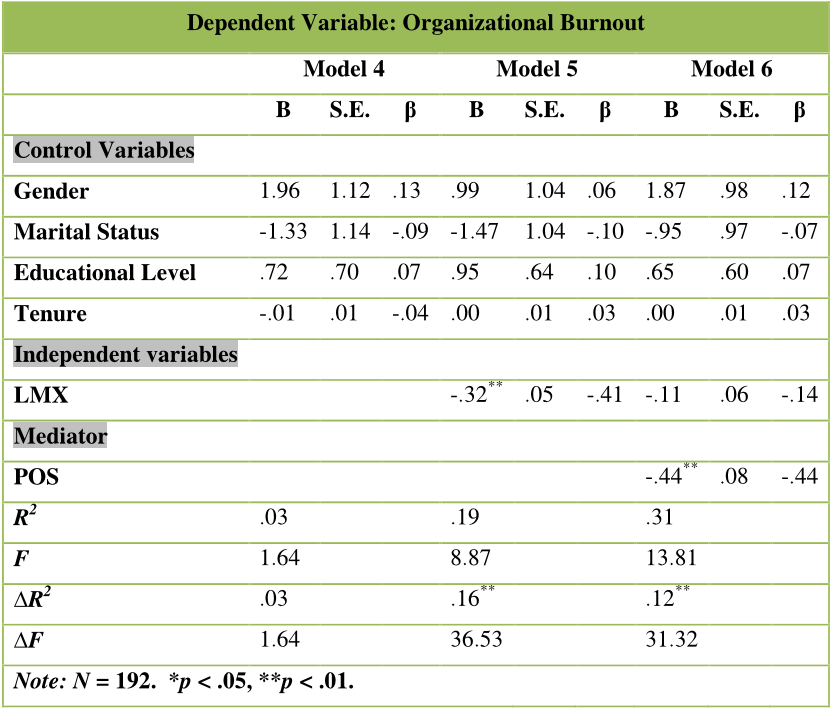












247 citations
19 citations
14 citations
8 citations
2 citations
2,103 citations
2,097 citations
...At a general level, Maslach and Leiter (1997) model of burnout focuses on the mismatch between the employee and the job environment in terms of workload, control, reward, community, fairness and values....
[...]
1,547 citations
1,542 citations
...Organizational practices such as participation in decision-making, fairness of rewards (Allen et al., 2003), developmental experiences and promotions (Wayne et al., 1997), autonomy (Eisenberger et al., 1999), job security (Rhoades and Eisenerger, 2002) and other variables are increasingly being…...
[...]
1,525 citations
Demographic variables of gender, marital status, educationlevel, and tenure have been considered as control variables for the purpose of this study.
a high-quality relationship with one’s leader can have a positive effect on performance and affective outcomes (Gerstner & Day, 1997).
In relationships marked by high LMX quality, the increased support by the supervisor may help reduce uncertainty and ambiguity of the subordinate (Harris & Kacmar, 2006).
Because the original scale is unidimensional and has high internal reliability, the use of shorter versions does not appear problematic (Rhoades & Eisenberger, 2002).
social exchange research hasestablished importance of quality of leader-member exchange (LMX) for organizational outcomes but research on ‘how’ aspects of the association are still lacking (Ilies, Nahrgang, & Morgeson, 2007).
As the person-organization fit affects one’s experience of the job, it is therefore likely to affect burnout (Siegall & McDonald, 2004).
Statistics confirmed the significance of mediation analysis for OID mediating relation of LMX quality (z = -2.74, p=.006 for LMX as independent variable) and burnout.
Activities like induction and training of new personnel involve high costs thereby increasing the relevance of turnover (Siong, Mellor, Moore & Firth, 2006).